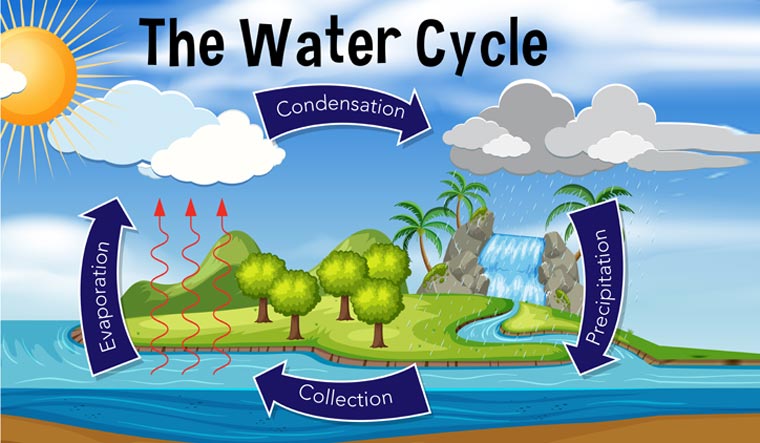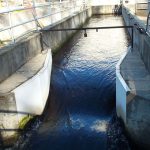A water cycle diagram, as given in this article, helps to answer the question, ‘How does the water cycle work?’ The steps of the water cycle, like rainfall, evaporation, and transpiration, make up the natural water circulation system known as the water cycle that continuously generates fresh water.
Movement of Water Through the Steps of the Water Cycle
Water is essential to our life and, in fact, for all life on this planet. Unlike some of our other resources, however, water does not get ‘used up’ as we use it. It may get converted from one form to another or become ‘dirty’ with pollutants, and it may move from one location to another, but it all remains near or at the earth’s surface and in the atmosphere. The earth’s water moves through the steps of the water cycle, by processes like evaporation, transpiration, precipitation, infiltration, flow of rivers, and flow of groundwater. These processes make up the natural water circulation system called the water cycle that continuously regenerates fresh water.

A good start toward understanding how the water cycle works is to see a pictorial representation as in the water cycle diagrams in this section. You can click on a diagram to enlarge it.

As the diagrams show, a major part of the water cycle is evaporation of water from the ocean into the atmosphere, movement of the air mass containing water vapor over land, and precipitation over the land. This precipitation puts water into rivers and streams, which flow back to the oceans, and it replenishes groundwater by infiltration. Underground water near the surface, called soil moisture, is taken up by plants through their root system, and a
large part of it goes back into the air through the plant leaves by a process called transpiration. Some of the precipitation which lands on the ground will “soak in” or infiltrate to replenish groundwater, and, if there is enough precipitation, some will become surface runoff to the nearest river, stream, or tributary.

Some of the water which evaporates from the ocean will go directly back into the ocean by precipitation. Water vapor also enters the atmosphere by evaporation from rivers, lakes, streams, and wet surfaces,
Quantities of Salt Water, Fresh Water, Ice, etc.

In addition to understanding the water flows that make up the steps of the water cycle, knowledge about how much water is stored in the various forms of water in the water cycle is also quite interesting. You may have already figured out that there is much more water in the oceans than all of the fresh water on earth, but did you know that there is a lot more fresh water underground than there is in all of the rivers, lakes and streams? Also, you have probably heard that the human body is three-fourths water. This same proportion of water is present in most plants and animals. Do you have
any idea, however, what portion of the earth’s inventory of water is tied up in plants and animals (including humans)? The answers to these questions and more will be summarized in this section. The information comes from an article,”The Water Cycle”, which appeared in the September 1970 issue of The Scientific American.
Based on the information in the Scientific American, 96% of the earths water is salt water in the oceans and salt seas. The 4% which is fresh water is three fourths ice and one fourth liquid water. Thus about 3% of the earth’s water is ice and about 1% is liquid fresh water. Now, of that 1% liquid fresh water, 98% is groundwater (underground water) and 2% is surface water (rivers, lakes and streams. Thus about 0.98% of the earth’s total water is in the form of groundwater, and only about 0.02% is fresh surface water. This water distribution is shown in the figure at the right.
Water is also present in several other very important forms, but only in very small percentages of the total water inventory as follows.
water vapor – 0.001% of total
surface moisture (available to plant roots) – 0.0003% of total
in plants and animals – 0.0000004% of total
The water cycle, as illustrated in water cycle diagrams, is made up of quite a few processes, precipitation, evaporation, transpiration, infiltration, groundwater flow, storm water runoff, and streamflow. Together these steps of the water cycle provide the natural circulation and recycling of the earth’s water to continuously regenerate fresh water.



Comments are closed